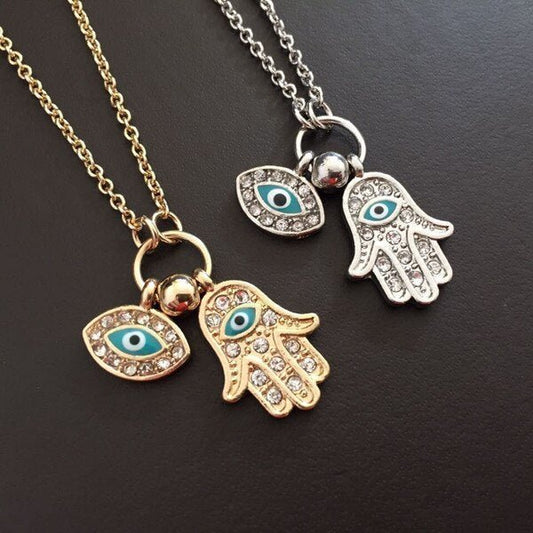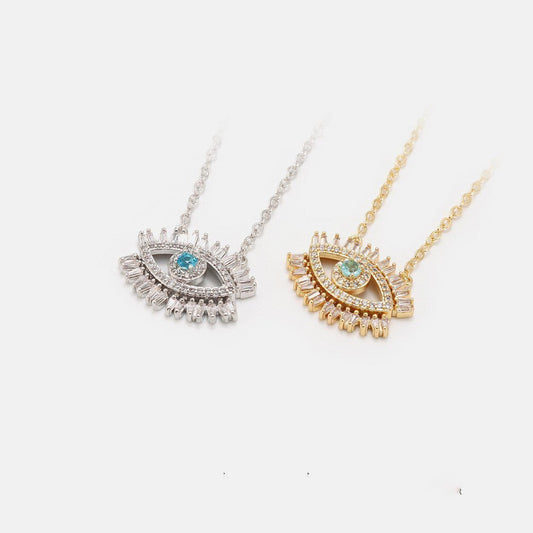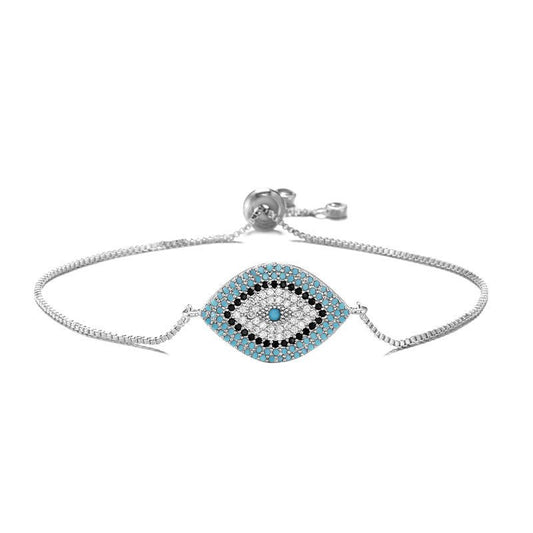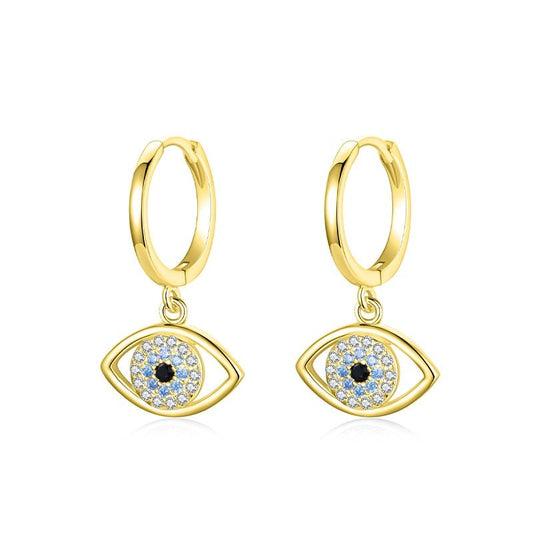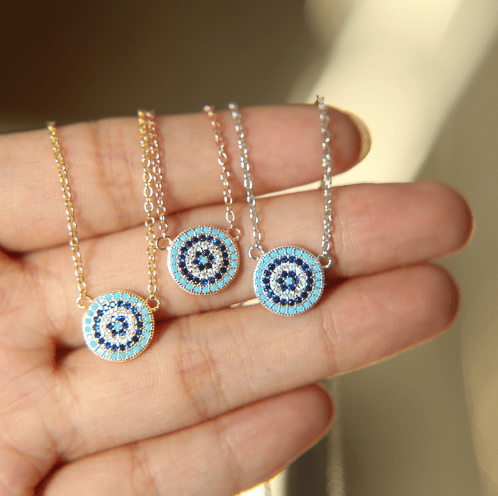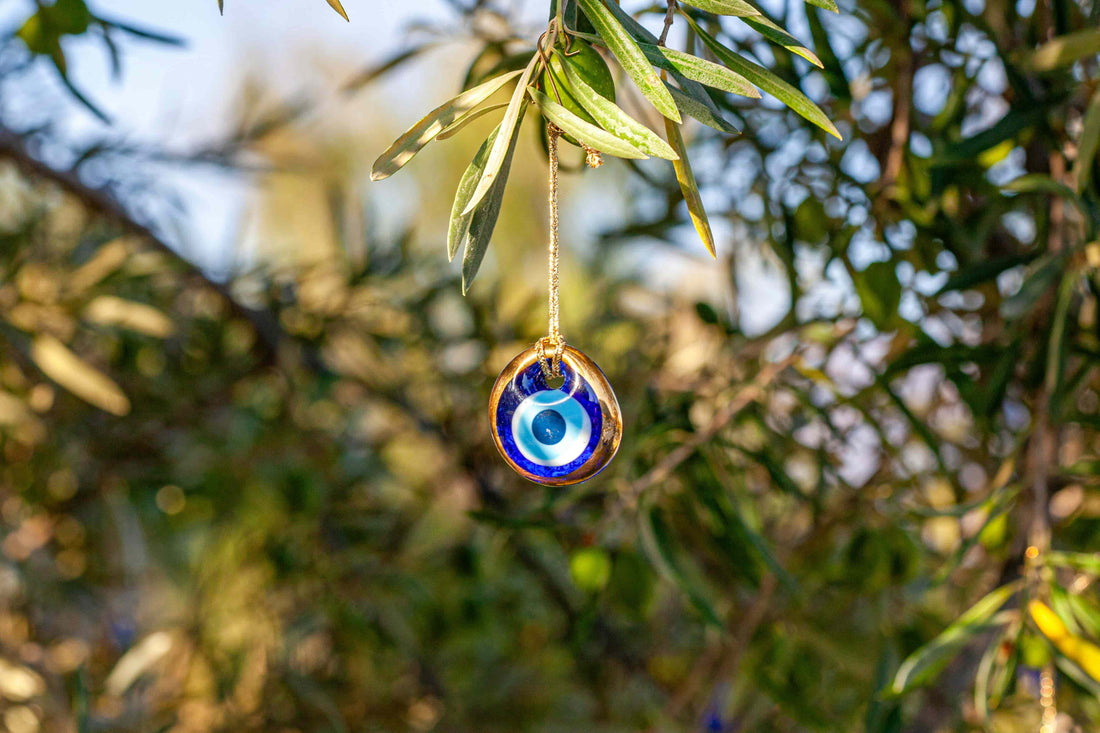
What is an Evil Eye?
The concept of the Evil Eye is one of the oldest and most widespread superstitions globally. Rooted in ancient cultures across the Middle East, Europe, Asia, and Africa, it refers to a malicious look believed to cause harm or bad luck for the person at whom it is directed.
This belief hinges on the idea that envy or praise can manifest into a curse, impacting the individual's general well-being. Different cultures have developed their own symbols and talismans, such as the Nazar amulet or Hamsa hand, to protect against the perceived dangers of the Evil Eye.
If you're curious about what an Evil Eye is, its origins, and how to protect yourself, then you've come to the right place.
What Does the Evil Eye Do?
The Evil Eye is believed to bring bad luck, misfortune, and harm to the person at whom it is directed. It is thought to have the power to cause illness, injury, financial loss, and other forms of negative effects on an individual's life.
In some cultures, it is also considered to be a curse that can affect generations within a family. The belief is that the Evil Eye can be cast intentionally or unintentionally by someone who possesses envy, jealousy, or ill intentions towards another person.
Protective jewelry is commonly used to ward off the Evil Eye. These accessories, embellished with Evil Eye symbols, serve as both fashion statements and talismans, with each color carrying unique meanings. It's advised to select the right evil eye color for optimal protection.
Who Can Wear the Evil Eye?

Interestingly, the Evil Eye is not limited to any one group of people; it can be worn by anyone who wishes to protect themselves from negative energies. However, its significance and the way it is perceived can vary greatly among different cultures and religions.
For Christians wearing an evil eye jewelry, it's seen as a form of protection, akin to the protective symbols found in The Bible.
Meanwhile, the evil eye in Islam is acknowledged in the Hadiths, and Muslims often use the phrase "Masha'Allah" to ward off envy and the potential harm it can bring. This diversity highlights the Evil Eye's universal appeal as a protective symbol.
Where Did the Evil Eye Originate?
What culture is the evil eye? Where does the evil eye come from? The Evil Eye's origins are as varied as the cultures that embrace it. Traceable to ancient civilizations like the Greeks, Romans, and Egyptians, its concept may date back to the 6th century BC, appearing in religious texts and artifacts.
This pervasive belief reflects a universal human preoccupation with envy and malice, highlighting the profound cultural and historical importance of the Evil Eye.
Is the Evil Eye Good or Bad?
The Evil Eye is a symbol that has been associated with both positive and negative connotations throughout history. In some cultures, it is seen as a protective talisman against evil forces, while in others, it is viewed as a malevolent curse.
Ultimately, the perception of the Evil Eye depends on personal beliefs and cultural context. However, its purpose remains the same - to protect against envy and ill-intent.
How to Protect Yourself from the Evil Eye?

Understanding how to get rid of the evil eye, remove its effects, and protect yourself from its malign influence is crucial. These practices aim to offer peace of mind and safeguard one’s well-being against misfortune.
7 Tips To Protect Yourself For the Evil Eye:
- Wearing Protective Symbols: Amulets such as the Hamsa hand, Nazar Boncuğu (blue eye), and other talismans are believed to ward off the evil eye's negative effects.
- Using Salt: Sprinkling salt over your shoulder or around the perimeter of your home is thought to cleanse the space and protect against the evil eye.
- Reciting Prayers or Mantras: Many cultures recommend reciting specific prayers, mantras, or phrases believed to offer protection against the evil eye.
- Carrying Herbs or Plants: Certain herbs like rue, rosemary, and lavender are considered to have protective properties that can help remove the effects of the evil eye.
- Performing Rituals: Some traditions involve rituals that may include the use of water, oil, or other elements to cleanse oneself or one's home of the evil eye's influence.
- Seeking the Help of a Spiritual Healer: In cases where the evil eye is believed to have caused significant harm, individuals may seek the assistance of a spiritual healer or shaman to remove its effects.
- Creating a Positive Mindset: While these protective measures can be helpful, having a positive mindset and focusing on gratitude and abundance can also help deflect the effects of the evil eye.
Additionally, surrounding yourself with positive energy and good intentions can also help ward off any negative effects of the evil eye. And if your Evil Eye breaks, don't worry—it can actually have a positive meaning.
Conclusion
In conclusion, understanding what an evil eye is and how it functions across different cultures is crucial in appreciating the diverse ways in which people seek protection from negativity and harm.
From carrying talismans like the blue eye to performing cleansing rituals and fostering a positive mindset, these practices offer not only a shield against the evil eye but also a way to reinforce community and personal well-being.
Remember, whether through using salt, reciting prayers, carrying protective herbs, seeking spiritual healing, or simply maintaining a positive outlook, the strategies to counteract the evil eye's effects are as varied as the cultures that cherish them.
Ultimately, the belief in the evil eye and the measures taken against it underscore the universal human desire for safety, health, and prosperity amidst the complexities of social interactions and the unseen forces of the world.


